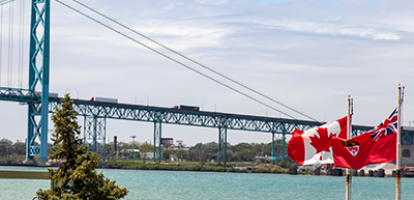From: Glen Hodgson
To: Canadian Climate Watchers
Date: September 11, 2023
Re: Fires and Floods: It's Time for Some Insurance Plans
Fires, floods and severe storms have hit across the country, with climate change the probable cause. These severe events have destroyed housing, commercial property and infrastructure with a lengthy recovery period ahead. Insured and uninsured losses will be in the billions, in addition to the cost of repairing public infrastructure. Lives have been lost.
This is a wake-up call. We need improved risk management and climate adaptation, since many more extreme weather events are on the way. A forward-looking risk management plan through comprehensive property insurance and climate adaptation would reduce the need for governments to assume open-ended climate damage risk and related costs. Without adequate flood, fire and other severe weather insurance coverage, property owners will inevitably seek government bailouts to restore the property to a livable state, or to pay for it to be abandoned.
Some key questions need to be answered:
Should property insurance that covers flooding and other extreme weather be made mandatory (like basic auto insurance)? Mandatory coverage would expand the risk pool and thus improve the capacity for effective management.
Can the private sector bear the risk alone, or is government involvement required? And who will pay the premiums on high-risk properties, which are likely to be prohibitive.
What else can be done to mitigate risk for properties built on floodplains and near forests? Up to 10 percent of Canada’s residential properties have been built on floodplains over many decades, and, in some regions, homes are built in or near forests. Climate change is expanding the risk of floods and fire, yet new construction is still being permitted in many instances. As a first step in risk management, it would make sense to stop new construction in risky areas. Expropriation of existing at-risk properties might also be considered, but that’s expensive and governments usually only consider it after the fact.
The options for pooling flood risk have been extensively analyzed. Last fall, a national task force on flood insurance and relocation produced a report that estimated total residential flood risk at $2.9-billion a year, markedly higher than previous forecasts. However, only 40 to 60 percent of Canadian homeowners currently purchase some form of flood coverage, with uptake concentrated in low- and medium-risk areas. According to the task force, the mandatory offer of flood insurance by insurers is a fundamental requirement for a successful flood insurance arrangement in Canada; voluntary purchase will not produce sufficient market penetration. However, homeowners in high-risk areas are likely to face daunting premium costs.
The report examined four models in detail. In simple terms:
- Model 1 would create a private-sector risk pool for high-risk homes, with significant government subsidies to achieve a single, and relatively low premium cap.
- Model 2 builds on Model 1 by dividing high-risk homes into quintiles (five equal shares) based on estimated reconstruction costs, with a premium cap in each quintile that increases with costs. Mandatory purchase of flood insurance would be required for any property with a mortgage.
- Model 3 features a Crown corporation that provides an automatic government backstop for comprehensive flood insurance by the insurance industry.
- Model 4 introduces a layered approach: Private flood insurance is an optional purchase up to a coverage limit, but mandatory for every property owner above that limit, with a government risk backstop.
The flood report’s detailed analysis should be applied to forest fire risk, especially if private insurers decide to stop selling policies in affected regions – as is now occurring in California.
There is no silver-bullet. Trade-offs will be needed and government support for high-risk properties will almost certainly be required. Nevertheless, by shifting public spending from recovery to risk management and mitigation, governments can better assess the scale of risk, improve fiscal planning and steadily enhance risk management.
Political will is now required. The federal and provincial governments need to align around a reasonable policy. Flood risk management discussions have proceeded for years and, even with a thoughtful options paper, the issue is still not a priority.
Yet governments are always the de facto backstop for extreme weather losses. Hurricane Fiona is the latest example. The first impulse from some premiers after Atlantic Canada and Quebec were hit hard last fall was to offer compensation for inadequately insured homeowners. This might be a popular short-term fix, but it creates poor incentives for forward-looking risk management by households and governments.
What will it take to finally adopt a realistic plan for extreme weather risk management? This is a question of political will and leadership, not just finding the best possible technical solution.
Glen Hodgson is a Fellow-In-Residence at the C.D. Howe Institute.
To send a comment or leave feedback, email us at blog@cdhowe.org.
The views expressed here are those of the author. The C.D. Howe Institute does not take corporate positions on policy matters.
A version of this Memo first appeared in The Globe and Mail.





